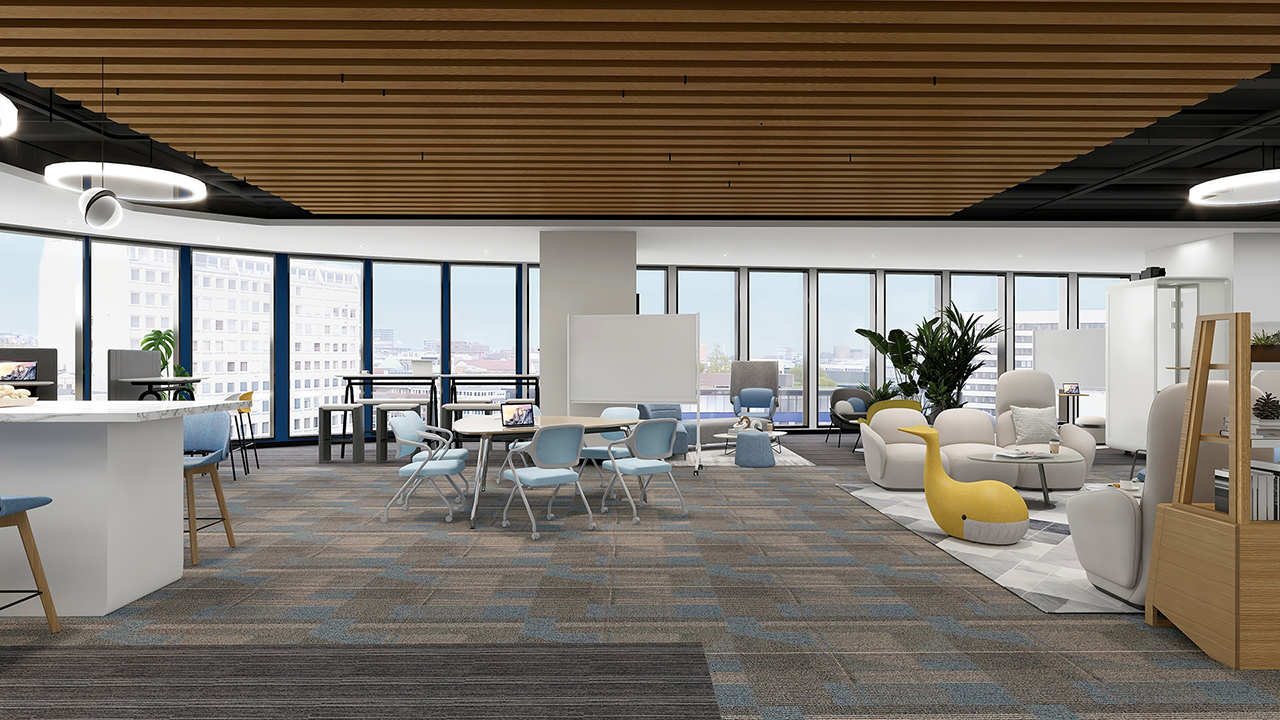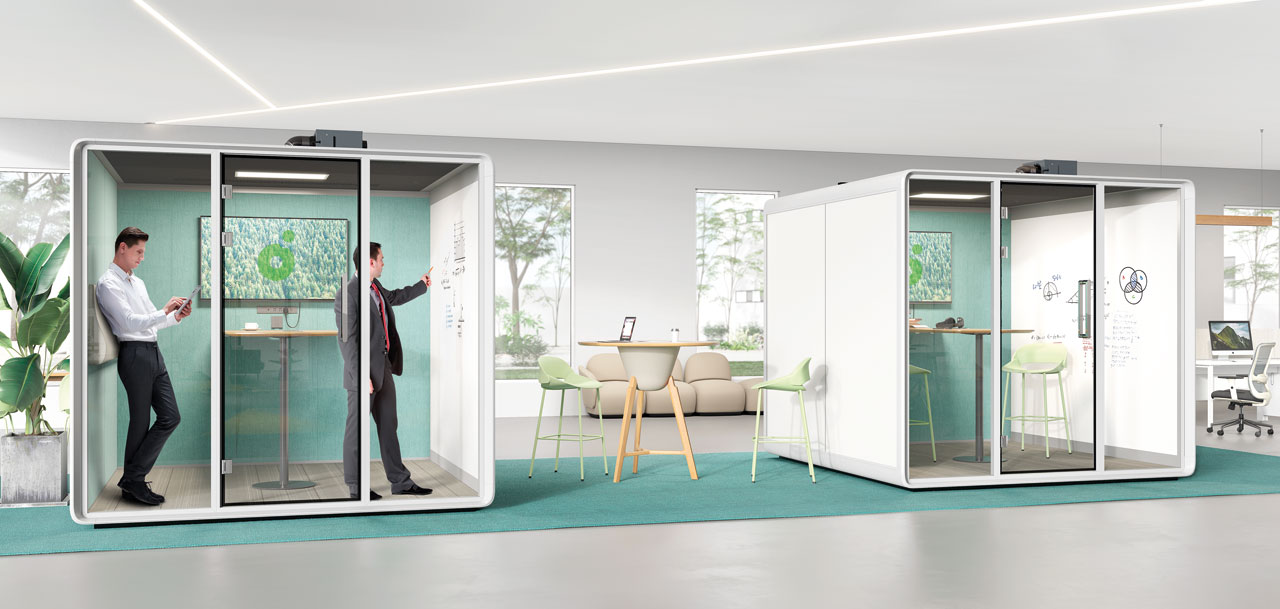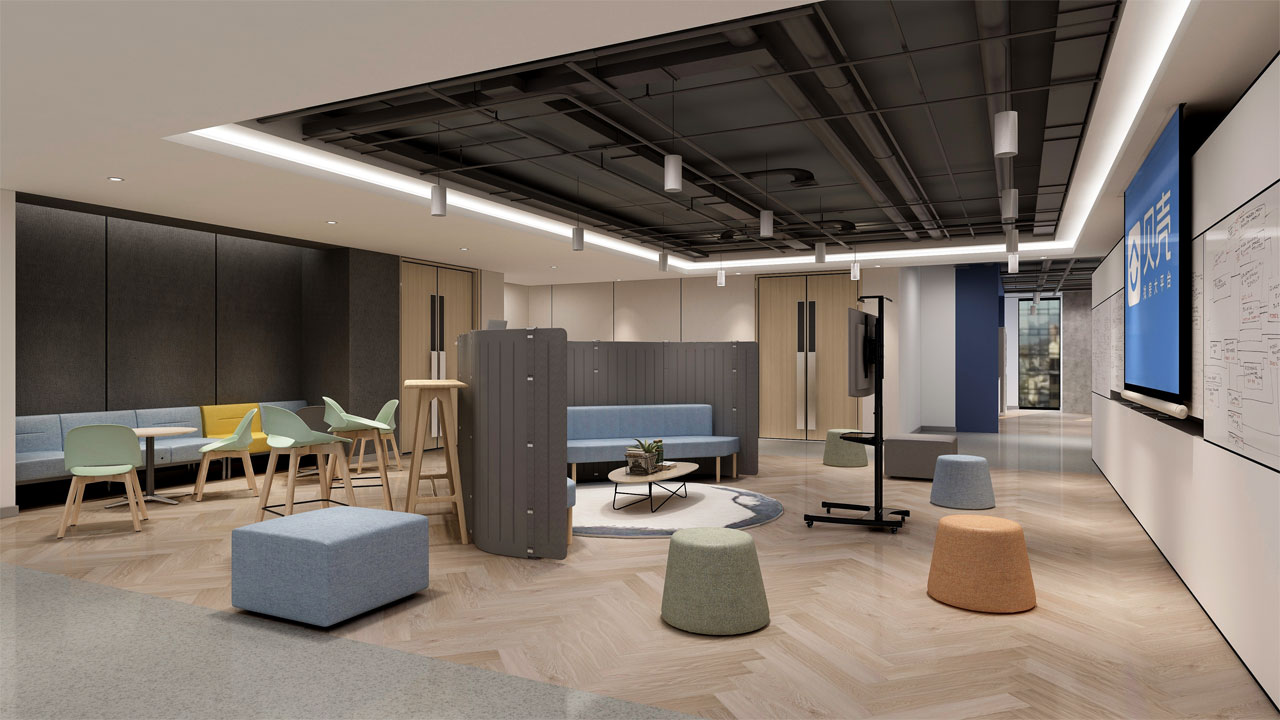
How many times have you heard this phrase: “This meeting should have been an email” ? . It has become a popular meme and rightly so. Some meetings could definitely be avoided, and as we go back to the office, collaborative meetings are more crucial than ever. But nobody wants to sit in a dull boardroom for hours. Not all meetings are the same, then why should all meeting rooms be the same?
Collaboration is the cornerstone of getting things done at the office. Meeting with people, exchanging ideas, brainstorming, and coordinating on an execution strategy are all critical steps in moving your company ahead. Meetings are no longer merely formal boardroom talks as firms move toward collaborative work arrangements. Collaboration can range from a quiet conversation with one other person to brainstorming ideas as a group or videoconferencing with colleagues all over the world.

Meeting rooms are in increased demand as the workplace becomes busier with more employees on-site. Employees require more than just a place to meet face to face. They must also be able to digitally connect with remote teams as well. We expect meeting space demand to increase more as the return-to-work progresses. To accommodate this need, businesses require spaces for all types of interactions, regardless of the number of people engaged or how brief or informal the encounter is.
Effective collaborative spaces are more than just a few chairs around a table surrounded by four walls. Workplaces should provide a choice of meeting rooms of various sizes and facilities for their people. Let's take a look at five types of meeting spaces that should be incorporated into your office design.
Phone booths and pods
When employees need a private space for a client call or a virtual meeting, phone booths are ideal. Employees will have a comfy sofa to relax on in a booth, as well as a table hanging at an ideal height to store their computers, notebooks, or a cup of coffee. There are also Office pods having a larger space that can accommodate 3-4 individuals.
Open booths hold up to 4-6 people at a time and are excellent for brief brainstorming sessions or informal catch-ups with co-workers. The attractive colors and stylish patterns on the walls give off a relaxed, welcoming feeling. They may be utilised for both leisure and informal presentations as they include comfortable seats and tech tools.

Informal meeting rooms
A warm, cozy area with all the characteristics of a meeting room is required for casual gatherings, team talks, and brainstorming sessions. It might be closed or semi-closed to provide some privacy, but it shouldn't seem fully isolated from the rest of the office. Glass barriers address the issue of seclusion while also blending in with the open office layout. The comfortable couches, armchairs, and cushioned stools allow visitors to settle in for longer conversations. Most places like this are tech-enabled to meet today's office demands.
Formal Large conference rooms
We have conference rooms with a more traditional design for management meetings, client negotiations, and confidential sales and target discussions. Many times Employees from various departments and levels are required to attend some meetings. A large space is required for them. The interior is typically understated, with subdued hues and classic designs on furniture. It is designed to be the space where important business decisions are made.
Open collaborative spaces
Teamwork sometimes take place in a welcoming environment where people can relax and enjoy a casual conversation. Comfortable spaces, such as employee lounges, may indicate a business culture of displaying how much you care. It can also be an open, unstructured seating area with a stair-like pattern where employees can make themselves at home. Bright accent pillows, coloured coffee tables, and potted plants may be used to create a trendy, welcoming ambience. These large facilities may also be utilised for team building exercises and town hall meetings.

Meeting spaces with Tools and Tech
The Hybrid office is now agile. Tools and Tech are essential parts of collaboration. Low-tech tools like as markers and a whiteboard and high-tech ones, such as videoconferencing software or technology. In today's world, the ability to videoconference into meetings is becoming increasingly vital. A whiteboard might be adequate for your team to write down thoughts and establish points during brainstorming sessions. A room isn't always required, and a semi-private place will suffice. Ideation sessions or presentations can be held in small, intimate groups or in huge groups.